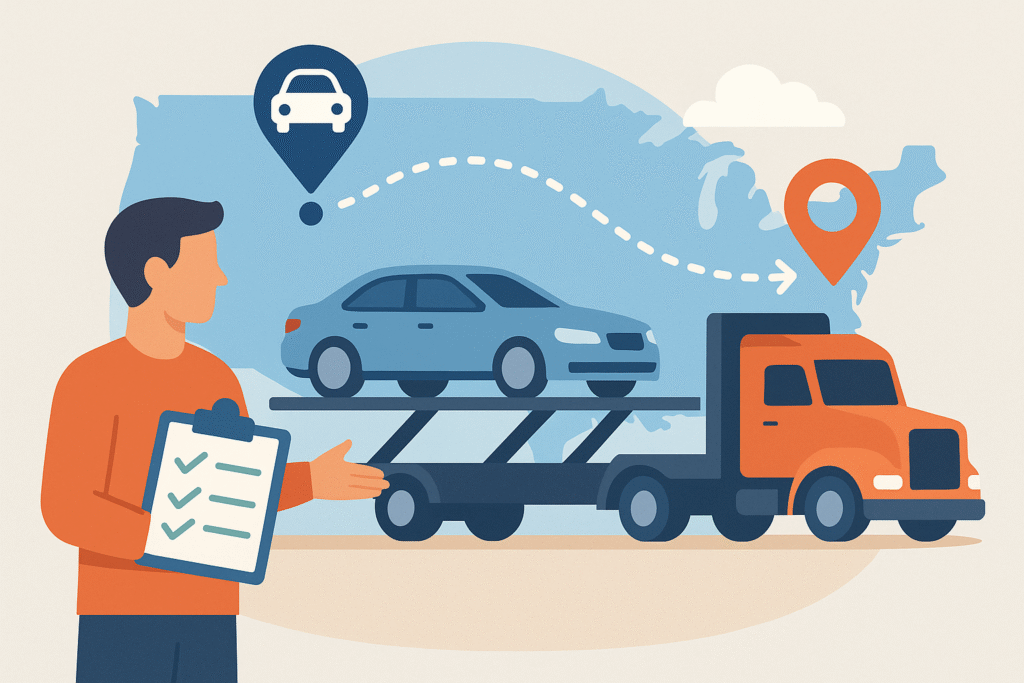People’s initial questions on planning vehicle shipment tend to orbit around the ETA. The reality of the matter is that a singular answer can rarely, if ever, fit all questions. Multiple factors such as distance, journey, carrier load completion, and weather affect the delivery time. After spending years around drivers and dispatchers, I can say that most jobs fall into familiar ranges, and knowing them up front helps you plan better. Let’s break down timelines, factors that stretch them out, and what you can do to keep the move on track.
Car delivery timelines
Carriers give ranges rather than guarantees because no two runs are identical. A truck that leaves on time may be slowed by storms or traffic jams, or an earlier pickup that ran late. As a rule, local and short-distance moves often wrap up within a couple of days. Medium runs are closer to four to six days. Cross-country transport stretches to a week or more. If you’re moving your household or starting a job in a new city, always leave extra cushion in your plans rather than betting on an exact day.
Shipping time per distance
Short hauls of 200 to 500 miles typically take two to three days. Sometimes the car can be picked up one day and dropped off the next, but full trailers and city traffic can push delivery a little longer. Even so, short runs are the quickest category.
Mid-range trips of 500 to 1,500 miles average four to six days. Common routes like Chicago to Dallas or Atlanta to Miami fall into this range. Because trucks often load multiple cars headed in similar directions, you can expect a few extra stops along the way, which adds to the total time.
Cross-country transport, covering 2,000 miles or more, generally takes seven to ten days. Winter weather, mountain passes, and holiday traffic can make it longer. A run from Los Angeles to New York is a good example—you’ll want to allow for at least a week and possibly more. For a sense of how time and distance tie into pricing, you can look here: Car shipping costs.
Factors that affect delivery time
Seasonal demand matters more than most people think. In summer and during the holiday season, more vehicles are shipped, and trucks fill up quickly. That can stretch out waiting periods before a car is even loaded. Booking early in busy months improves the chances of a quicker assignment.
Pickup and delivery addresses also influence timing. Vehicles moved between large cities are easier to place because those routes are popular. If the pickup or drop-off is in a rural area, it can take longer since carriers may not pass through as often. Sometimes drivers need to meet customers at a nearby parking lot or main road if narrow streets or gated communities block access, which can add small delays.
Traffic and weather are wildcards. Heavy congestion in metro areas or storms in mountain passes can cost drivers hours or days. They plan ahead, but these factors are outside anyone’s control. Keeping in touch with your driver is the best way to know if conditions are shifting the schedule.
Speed tips for faster delivery – FAQ
Is there a way to lock in faster service?
There are no absolute guarantees, but booking in advance and offering a fair rate usually places your car ahead of less competitive loads. Trucks often accept jobs that are well-prepared and confirmed.
Does paying a higher rate help?
Yes. Loads priced attractively tend to be picked up sooner, especially during peak seasons when carriers can choose from many jobs.
Is door-to-door quicker than terminal service?
Most of the time, yes. Door-to-door goes directly to you, while terminal service can involve extra waiting days as vehicles sit in yards until a trailer fills.
How does car preparation affect timing?
A car that’s ready to load saves everyone time. Remove belongings, keep the tank low, and check the battery. A vehicle that won’t start or isn’t prepared can slow the entire route. For a checklist, read Preparing your car.
Does enclosed shipping speed things up?
It can, since enclosed trailers haul fewer cars and make fewer stops. But they’re less common, so availability depends on the route. In some cases, finding an enclosed carrier may actually take longer.
Delivery times for auto transport are about setting realistic expectations. By understanding mileage-based ranges, planning around seasonal demand, and preparing your car correctly, you’ll improve your chances of a smooth, on-time handoff. Flexibility and preparation are the two tools that keep surprises to a minimum once your vehicle is on the road.


